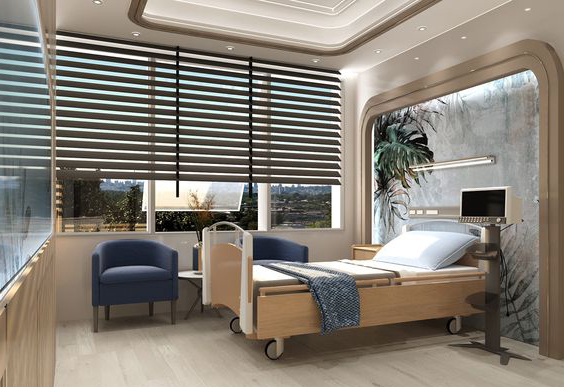Views: 0 Author: Site Editor Publish Time: 2024-05-07 Origin: Site








Patient and staff safety is paramount in hospital wards, where accidents or injuries can have serious consequences. While healthcare furniture may not be the first thing that comes to mind when considering safety measures, its design and features play a critical role in minimizing risk and creating a safe environment. In this article, we'll explore furniture features and design considerations that prioritize safety and contribute to a safer patient care environment for everyone involved.

Sturdy Construction
One of the most fundamental aspects of safe healthcare furniture is sturdy construction. Hospital furniture should be strong and durable to withstand the rigors of daily use in a busy unit environment. Look for furniture made from high-quality materials, such as steel or reinforced plastics, that can support the weight of patients and resist damage from impacts or accidents. Sturdy construction ensures that furniture remains stable and secure, reducing the risk of collapse or tipping incidents that could harm patients or staff.
Smooth Surfaces and Rounded Edges
Sharp edges and rough surfaces pose a significant safety hazard in hospital wards, especially in environments where patients may be vulnerable or disoriented. Choose furniture with smooth surfaces and rounded edges to minimize the risk of cuts, bruises or abrasions. Smooth surfaces are also easier to clean and disinfect, furthering infection control efforts in healthcare facilities. By eliminating sharp edges and rough surfaces, healthcare facilities can create a safer environment for patients and staff.
Anti-Tip Design
Preventing furniture tip-over accidents is essential in hospital wards where patients may rely on furniture for support or stability. Look for furniture with anti-tipping features, such as wide bases or weighted bottoms, that prevent tipping when weight is applied unevenly. In addition, consider securing tall or top-heavy furniture to the wall or floor to further reduce the risk of tip-over incidents. Anti-tilt design considerations are critical to ensuring the safety of patients, especially those with mobility or balance issues.
Slip-Resistant Surfaces
Slip and fall accidents are a common cause of injury in hospital wards, posing a risk to both patients and staff. Choose furniture with slip-resistant surfaces or coatings to provide traction and stability, especially in areas prone to spills or moisture. Slip-resistant surfaces can help prevent slips and falls, reducing the likelihood of injury and improving overall patient care safety. In addition, consider placing non-slip mats or rugs under furniture to further enhance traction on smooth or slippery floors.
Accessible Design
Accessibility is another important consideration when it comes to the safety of healthcare furniture in hospital wards. Ensure that furniture is designed with accessibility in mind by providing ample space for patients to maneuver mobility aids such as wheelchairs or walkers. Height-adjustable features can also improve accessibility by allowing furniture to be adjusted to meet individual patient needs. By prioritizing accessible design, healthcare facilities can ensure that all patients can safely and comfortably use hospital furniture without barriers or limitations.
Conclusion
Safety should always be a top priority in hospital wards, and healthcare furniture plays an important role in creating a safe environment for patients and staff. By choosing furniture with sturdy construction, smooth surfaces, anti-tilt features, slip-resistant surfaces and accessible design, healthcare facilities can minimize the risk of accidents or injuries on hospital wards. Prioritizing safety in furniture selection demonstrates a commitment to the well-being of patients and staff, ultimately contributing to a safer and more comfortable healthcare environment for all involved.